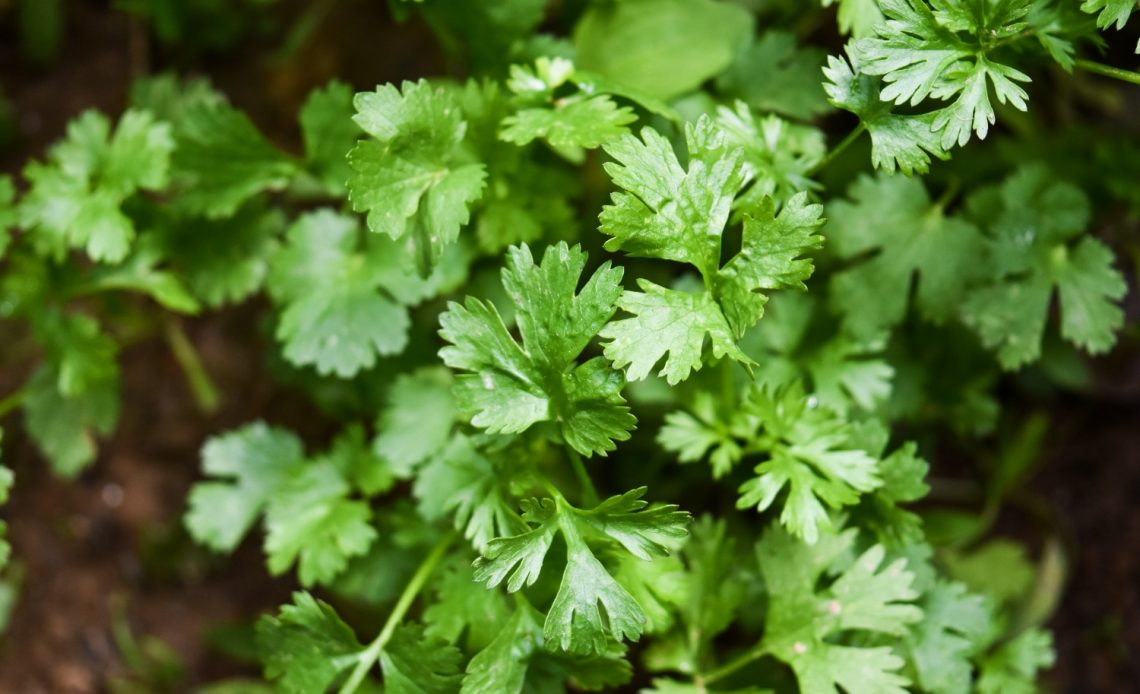

We’re here to help! Wild Yards is a completely free website that is 100% dedicated to helping you create a wildlife-friendly, sustainable yard. Read more
WildYards is reader-supported. When you buy a product through a link on our site, we may earn a comission. Every product is independently selected by our (obsessive) editors and our reviews are unbiased and objective. Read more about our mission or our privacy policy.
Cilantro is a staple in Mexican and Southwest-style cuisines. Its peppery flavor and citrus undertones make it the perfect addition to soups, sauces, beans, and more. From a gardening standpoint, the great thing about cilantro is how easy it is to tend to. This fast-growing herb thrives in moist soil in partly sunny locations, meaning it works well as a companion plant for a variety of other garden favorites, like tomatoes and peppers. And, if you ever want to propagate it, you can easily grow cilantro from cuttings.
To grow cilantro from cuttings, choose a healthy stem that measures 4 inches or longer. Place the stem in a glass with 2 to 3 inches of water and set the cutting in indirect sunlight. Your cutting should begin sprouting leaves in 7 to 14 days. Once the cutting has three sets of new leaves, it’s ready to be moved to your garden.
When is the best time to grow cilantro from cuttings?
If you want your cilantro cuttings to root, you’ve got to take them at the right time. Cilantro grows best in cool weather, so it thrives in spring and fall gardens. Although cilantro is also somewhat tolerant of warm weather, it falters in the heat of summer. So, for best results, take your cuttings in the spring or fall, and avoid trying to propagate your cilantro in summer, when it’s too hot for it to grow well.
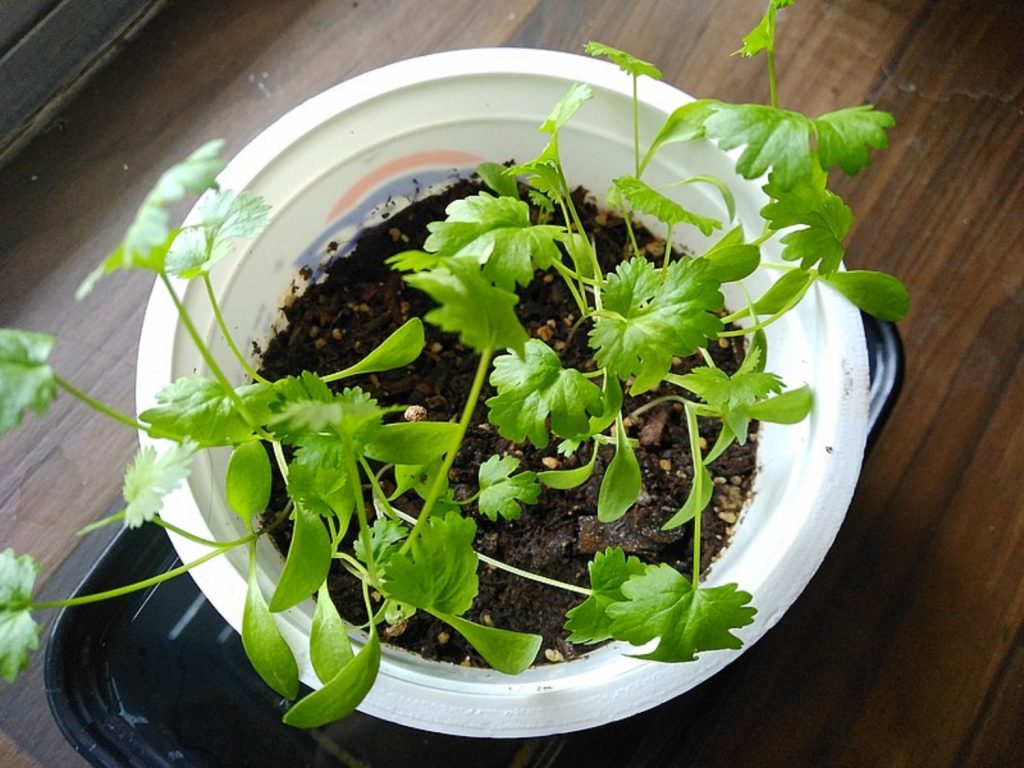
Choosing the right stem for a cutting
The first step in propagating cilantro from cuttings is choosing the correct stem. Obviously, you should avoid wilted, discolored, broken, or otherwise sick-looking stems. These stems likely won’t take root. Instead, choose crisp green shoots that measure at least 4 inches in length. The stem should have at least two sets of leaves, but more is better.
You can use cilantro from your garden to take a cutting. Or, if you haven’t got any cilantro on hand, then purchase a healthy-looking bunch from the grocery store to propagate. Choose cilantro that still has roots if possible. While it’s easy enough to get a fresh cilantro cutting to take root, the cilantro at the grocery store sits for days at a time. Therefore, it’s much easier to get this aged cilantro to propagate from the root rather than the stem.
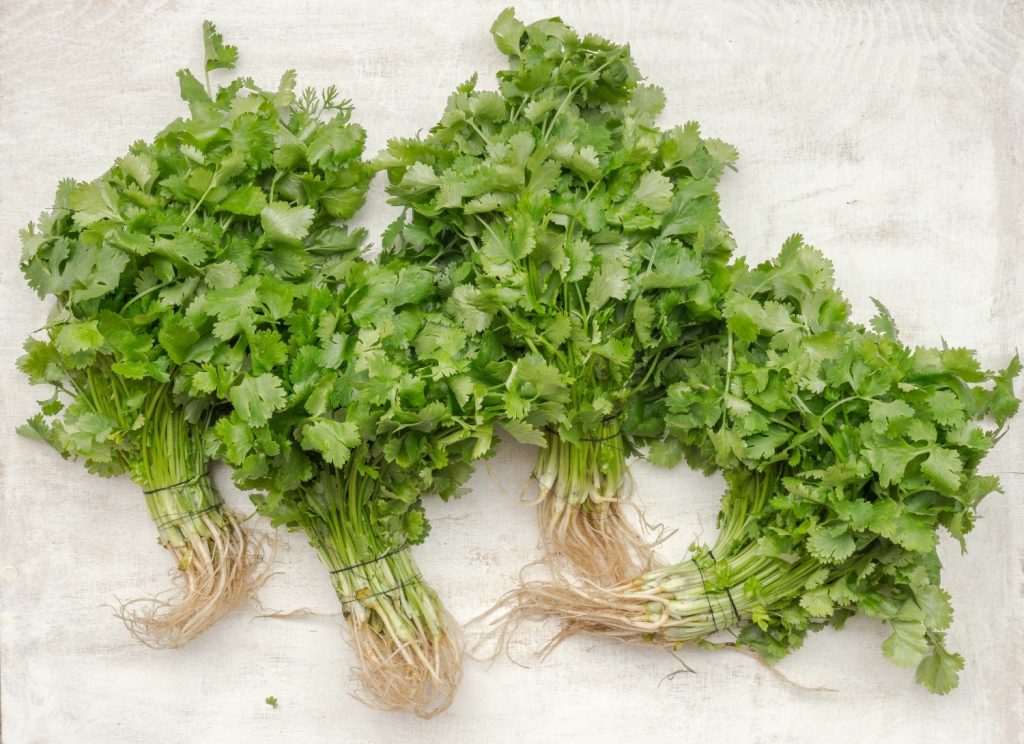
Preparing the cutting
How you prepare your cilantro cutting depends on where you get it. If you’re taking the cutting from a living plant, grasp the stem gently with one hand, and use a sharp pair of scissors to trim the cutting away with the other hand. Hold your scissors at a slight angle when you take the cutting. This increases the surface area of the cut-end of the stem, so the cutting can absorb more water.
If you’re propagating cilantro from a bunch that you bought from the grocery store, choose sprigs that have healthy-looking roots that measure at least ½-inch. It’s safe to use the uppermost part of the sprigs in your cooking if you want to. Just be sure to leave one or two inches of stem above the roots. Wash the sprigs gently to remove any chemicals, and use this opportunity to cull out the bad ones.
For best results, regardless of which method you use to propagate cilantro, start multiple sprigs/cuttings at one time to improve your chances of success.
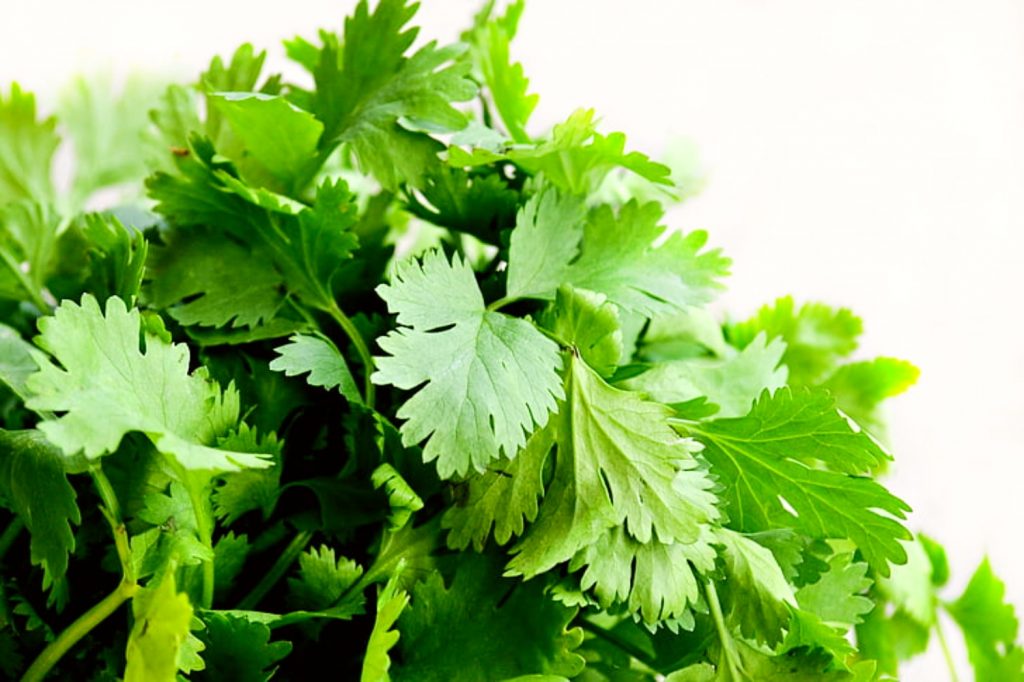
How to start cilantro cuttings in water
Fresh cilantro cuttings can be started in water. Take a tall clear glass jar and fill it with two or three inches of water. Set the cilantro in cut end-down, and set the jar on a warm windowsill where it will receive indirect sunlight. You may need to check the spot regularly for the first few days to make sure the cutting stays warm enough. While cilantro likes cool weather, if the cutting gets too cold, it won’t take root.
Be sure to keep the water clean. As the cutting sits, the water will cloud up every few days, so change it out when it gets dirty. Avoid overfilling the jar, which can suffocate the cutting before it even gets a chance to grow. It can take anywhere from 7 to 14 days for your cilantro cutting to develop roots — so be patient!
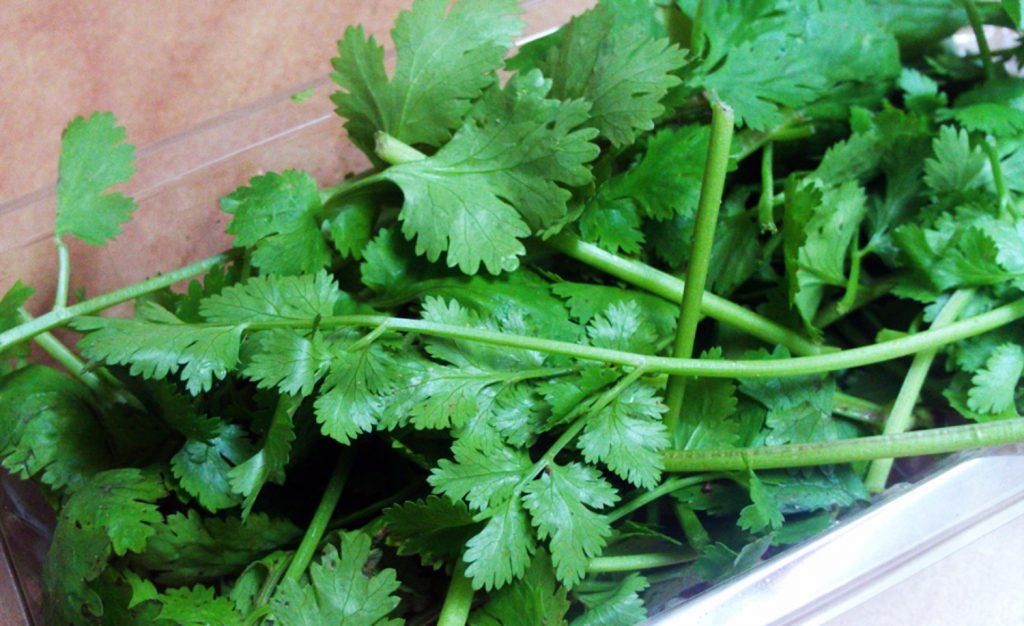
How to start cilantro cuttings in pots
For cilantro cuttings that still have their roots, your best bet is to stick them in pots. Fill medium-sized pots with a well-draining potting soil mix, and use your finger to poke a hole in the center deep enough for the cutting’s longest root to fit into. Place the sprig gently into the hole, making sure the stem sticks up above the soil.
Use your fingers to gently backfill around the sprig, tamping carefully as you go to remove air pockets. Space the sprigs two inches apart from each other so they have room to root and branch out.
Once your sprigs are in place, give them a drink. It’s critical that you keep the soil uniformly moist. If the soil dries out, the cuttings won’t be able to revive themselves. Place the pots where they can get bright morning sun. It’s safe to set the pots outside if you want to, just be sure to move them indoors at night so they don’t get too cold.
The stems of the sprigs should start to green up again in just a few days’ time. The better care you give them, the sooner they’ll respond.
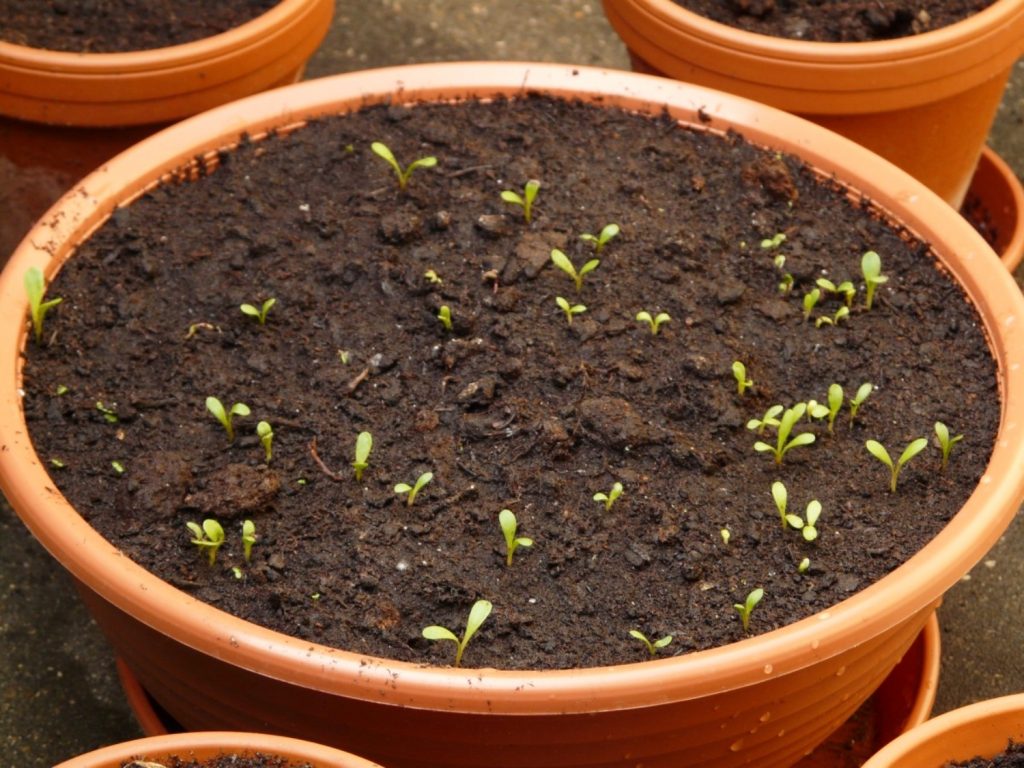
Transplanting cilantro cuttings to your garden
Whether you grow cilantro from cuttings you took from established plants, or whether you started your cilantro from a bunch that you bought from the grocery store, once the cuttings have sprouted roots and/or two or three sets of new leaves, you can start thinking about transplanting them to your garden.
First, choose a spot that gets 5 to 6 hours of sunlight a day. Cilantro doesn’t grow well in full sun, but unlike other herbs, like mint, it won’t grow well in full shade. Next, test the soil. Your cilantro will grow best in slightly acidic to neutral soil with a pH of 6.0 to 7.0. The soil should be rich and loamy, full of decaying organic materials. This not only feeds the plant but also improves the soil’s drainage while allowing it to retain just the right amount of moisture.
Use a hand trowel to dig a hole large enough for your cuttings to fit into. Again, you should space the cuttings around two inches apart. Be sure to place the cuttings so that the root collar, the place where the roots turn into the stem, is at ground level. Burying the cuttings too deep will suffocate them, and you’ll have to start the whole propagation process over again.
Once your cuttings are in place, gently backfill around them, tamping to remove air bubbles. Water the transplants well, and check their soil regularly for the first two weeks. Insufficient moisture is one of the leading causes of transplant shock, so don’t let your baby cilantro plants dry out. You should notice visible signs of growth after one to two weeks.
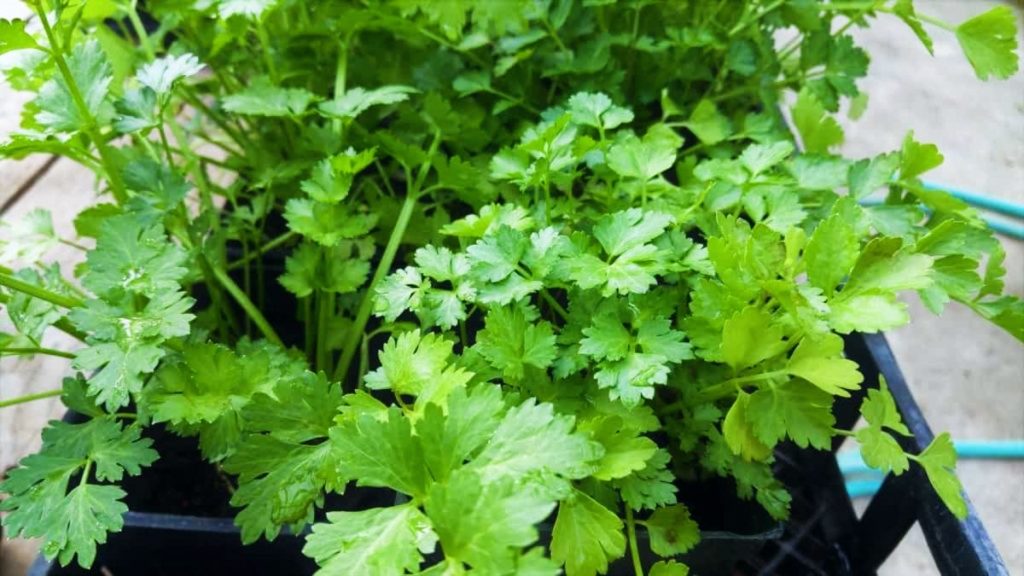
How to fertilize cilantro to improve production
Cilantro isn’t a particularly heavy feeder, so unless your soil is especially nutrient-poor and lacking in plant matter, there’s no real need to fertilize it. However, if you’d like to support your cilantro in every way you can, give the plants a dose of nitrogen-rich fertilizer once they become established.
Use powder 21-0-0 fertilizer to feed your cilantro. This nitrogen-only fertilizer gives your cilantro all of the nutrients it needs to produce plenty of healthy green growth, even after you start harvesting leaves. Feed your cilantro twice per growing season. If you want to forgo the fertilizer, then try growing your cilantro next to beans. Legumes are nitrogen fixers, making them a great companion for cilantro.
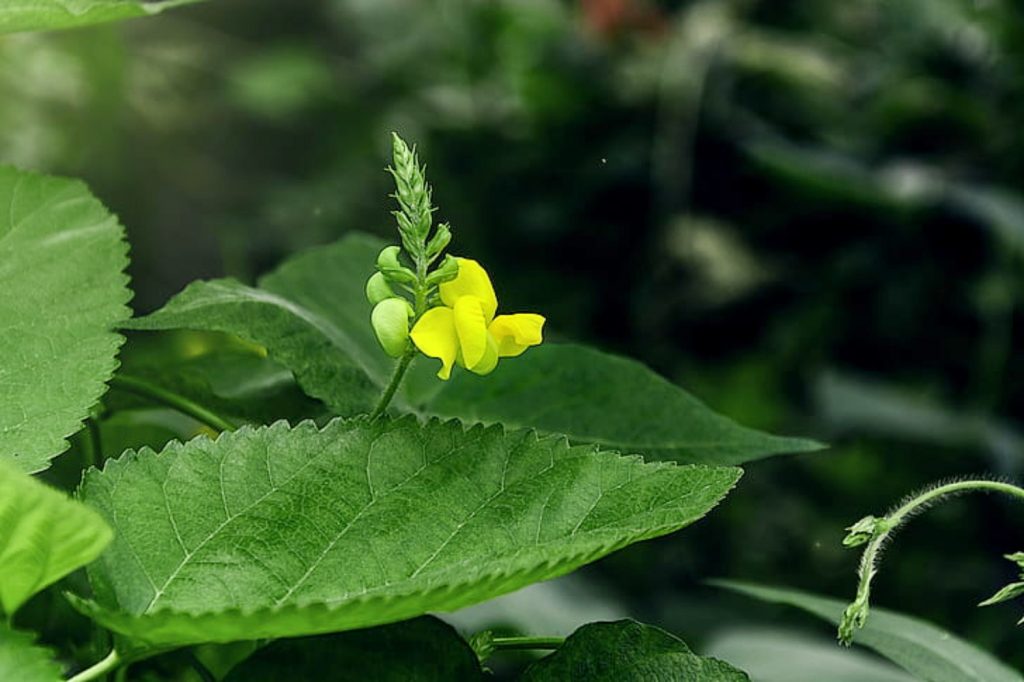
How to harvest cilantro from cuttings
After weeks of babying your cilantro cuttings, you’re probably itching to gather your very first harvest. But when will your cilantro be ready to collect? Cilantro is ready to be harvested 30 to 45 days after transplanting, or when the plants measure 6 inches tall. However, if you prefer tender young cilantro, you can begin harvesting the plant sooner.
Use a sharp pair of scissors to harvest cilantro sprigs, and never take more than 30% of the plant at one time. Trim the cuttings leaving an inch of the stem behind so the plant can regrow. Cilantro will continue to grow until it goes to seed, at which point you should refrain from harvesting anymore so the plant can reproduce and be ready to come back again next growing season.
Tips for success when growing cilantro from cuttings
Like thyme, cilantro is very easy to start from cuttings. On average, it takes about 3 weeks for cuttings and sprigs to grow enough to be ready to move to the garden. Keeping the cuttings warm and hydrated is key to propagating cilantro successfully.
You don’t have to be a professional gardener to get your cilantro to grow from cuttings. With patience and practice, you’ll be able to enjoy fresh cilantro from season to season.
